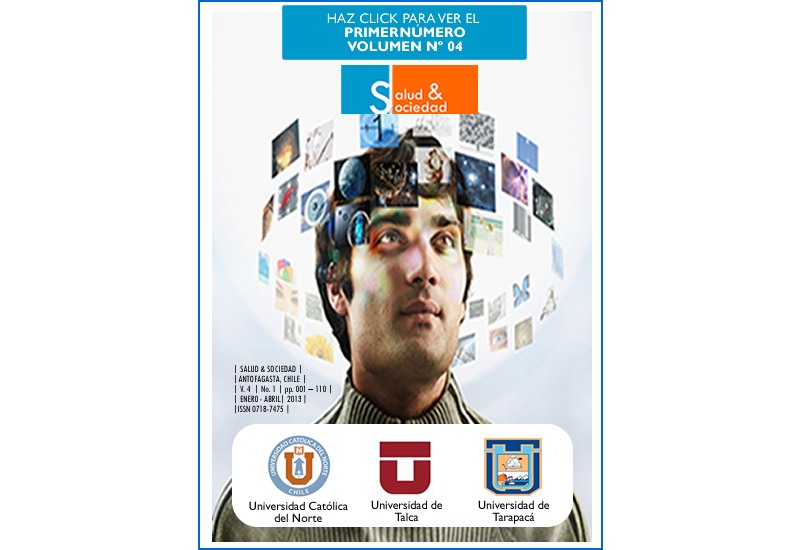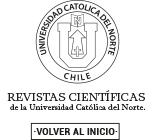Creencias paranormales en una muestra de estudiantes de psicología de universidades chilenas.
DOI:
https://doi.org/10.22199/S07187475.2013.0001.00001Palabras clave:
Ciencia, creencias paranormales, superstición, Science, paranormal beliefs, superstition,Resumen
Se presenta una revisión sobre las creencias en lo paranormal de una muestra de estudiantes de psicología (n = 360) pertenecientes a diversas universidades Estatales y Privadas (tradicionales y no tradicionales). La psicología durante décadas ha luchado por el reconocimiento de su estatuto científico, lo que en principio se opondría a la creencia en la magia y otras formas de superstición, así como un firme compromiso con la evidencia empírica y la racionalidad argumentativa. Este estudio revela cómo una proporción importante de los estudiantes mantiene creencias supersticiosas o tiene dudas sobre la ocurrencia de dichos fenómenos. El estudio de estas creencias es de suma relevancia pues podría llegar a tener efectos sobre las prácticas clínicas y la calidad de las prestaciones que reciben las personas.
This paper presents a review of the beliefs held by students regarding the paranormal. The participants were psychology students (n = 360) from public (traditional) and private (non-traditional/for profit) universities. In principle, psychology opposes belief in magic and other forms of superstition and is instead committed to empirical evidence and rational argument. Psychology has therefore struggled for decades with the question of the scientific status of the paranormal. This study demonstrates that a significant proportion of students hold superstitious beliefs or have doubts about the occurrence of such phenomena. Study of these beliefs is of the utmost importance, as it could affect both clinical practice and the quality of care people receive.
Descargas
Referencias
Bem, D. J. (1972). Self-perception theory. En L. Berkowitz (Ed.), Advances in Experimental Social Psychology, (Vol. 6, pp. 1-62). New York: Academic Press.
Bem, D. J. (2011). Feeling the future: Experimental evidence for anomalous retroactive influences on cognition and affect. Journal of Personality and Social Psychology, 100, 407-425.
Briñol, P., y Petty, R. E. (2006). Fundamental processes leading to attitude change: Implications for cancer prevention communications. Journal of Communication, 56, 81-104.
Campbell, J. D. (1986). Similarity and uniqueness: The effects of attribute type, relevance, and individual differences in self-esteem and depression. Journal of Personality and Social Psychology, 50, 281–294.
Cohen, J., y Hansel, C. E. M. (1956). Risk and gambling. New York: Philosophical Library.
Crary, R. W. (1966). Reactions to incongruent self-experiences. Journal of Consulting Psychology, 30, 246–252.
Dag, I. (1999). The relationships among paranormal beliefs, locus of control and psychopathology in a Turkish college sample. Personality and Individual Differences, 26, 723-737.
Epley, N., Akalis, S., Waytz, A., & Cacioppo, J. T. (2008). Creating social connection through inferential reproduction: Loneliness and perceived agency in gadgets, gods, and greyhounds. Psychological Science, 19, 114-120.
Epstein, S., Pacini, R., Denes Raj, V., & Heier, H. (1996). Individual differences in intuitive-experiential and analitycalrational thinking styles. Journal of Personality and Social Psychology, 71, 390-405.
Estrada, C., Oyarzún, M., & Yzerbyt, V. (2007). Teorías implícitas y esencialismo psicológico: Herramientas conceptuales para el estudio de las relaciones entre y dentro de los grupos. Psykhe, 16, 111-121.
Eyal, T., & Epley, N. (2010). How to seem telepathic: Enabling mind reading by matching self-construal. Psychological Science, 21, 700-705.
Gallup (2001). Americans’ belief in psychic and paranormal phenomena is up over last decade. Revisado el 20 de julio de 2011 en http://www.gallup.com/poll/4483/americans-belief-psychic-paranormalphenomena-over-last-decade.aspx
Hergovich, A. (2003). Field dependence, suggestibility and belief in paranormal phenomena. Personality and Individual Differences, 34, 195-209.
Higgins, E. T. (2000). Social cognition: Learning about what matters in the social world. European Journal of Social Psychology, 30, 3-39.
Instituto Nacional de la Juventud (2010). Sexta Encuesta Nacional de la Juventud. Santiago: Gobierno de Chile.
Irwin, H. J. (1993). Belief in the paranormal: A review of the empirical literature. Journal of the American Society for Physical Research, 87, 1-39.
Janis, I. L., y King, B. T. (1954). The influence of role-playing on opinion change. Journal of Abnormal and Social Psychology, 49, 211-218.
Jones, E. E., y Nisbett, R. E. (1972). The actor and the observer: Divergent perceptions of the causes of behavior.
En E. E. Jones, D. Kanouse, H. H. Kelley, R. E. Nisbett, S. Valins, y B. Weiner (Eds.), Attribution: Perceiving the causes of behavior (pp. 79–94). Morristown, NJ: General Learning Press.
Lord, C. G.; Ross, L., & Lepper, M. R. (1979). Biased assimilation and attitude polarization: The effects of prior theories on subsequently considered evidence. Journal of Personality and Social Psychology, 37, 2098–2109.
Kahnemann, D. & Tversky, A. (1981). The framing of decisions and the psychology of choice. Science, 211, 453-458.
Nisbett, R. E., y Ross, L. (1980). Human inference: Strategies and shortcomings of social judgment. Englewood Cliffs, NJ: Prentice-Hall.
Peltzer, K. (2003). Magical thinking and paranormal beliefs among secondary and university students in South Africa. Personality and Individual Differences, 35, 1419-1426.
Popper, K. R. (2000). Escritos Selectos. México DF: Fondo de Cultura Económica.
Pronin, E., Gilovich, T., y Ross, L. (2004). Objectivity in the eye of the beholder: Divergent perceptions of bias in self versus others. Psychological Review, 111, 781–799.
Radin, D. I. (1997). Unconscious perception of future emotions: An experiment in presentiment. Journal of Scientific Exploration, 11, 163–180.
Rattet, S. L. & Bursik, K. (2001). Investigating the Personality Correlates of Paranormal Belief and Precognitive Experience. Personality and Individual Differences, 31, 433-444.
Roig, M., Bridges, K. R., Renner, C. H. & Jackson, C. R. (1998). Belief in the paranormal and its association with irrational thinking controlled for context effects. Personality and Individual Differences, 24, 229-236.
Sokal, A. (2009). Más allá de las imposturas intelectuales. Barcelona: Paidós.
Tam, W-C. & Shiah, Y-J. (2004). Paranormal belief, religiosity and cognitive complexity. Theparapsychologycal Association Convention, 423-429.
Tobacyk, J. & Milford, G. (1983). Belief in paranormal phenomena: Assessment instrument development and implications for personality functioning. Journal of Personality and Social Psychology, 44, 648-655.
Tobacyk, J. & Pirttilä, A. (1992). Paranormal beliefs and their implications in university students from Finland and the United States. Journal of CrossCultural Psychology, 23, 59-71.
Tobacyk, J. & Shrader, D. (1991). Superstition and Self-efficacy. Psychological Report, 68, 1387-1388.
Tobacyk, J. & Wilkinson, L. V. (1990). Magical thinking and paranormal beliefs. Journal of Social Behavior and Personality, 5, 255-264.
Tobacyk, J. (2004). A Revised Paranormal Belief Scale. The International Journal of Transpersonal Studies, 23, 94-98.
Tversky, A., y Kahnemann, D. (1974). Judgment under uncertainty: Heuristics and biases. Science, 185, 1124-1131.
Ubillos, S., Sánchez, F. Páez, D. & Mayordomo, S. (2003). Sesgos cognitivos y explicaciones asociadas como factores determinantes de las conductas sexuales de riesgo. Revista de psicología social, 18, 261-279.
Vitulli, W., Tipton, S. M. & Rowe, J. L. (1999). Beliefs in paranormal: age and sex differences among elderly persons and undergraduate students. Psychological Report, 85, 847-855.
Wiseman, R. & Watt, C. (2004). Measuring superstitious belief: why lucky charms matter. Personality and Individual Differences, 37, 1533-1541.
Wiseman, R., Greening, E. & Smith, M. (2003). Belief in the Paranormal and Suggestion in the Séance Room. British Journal of Psychology, 94, 285-297.
Wolfradt, U. (1997). Dissociative experiences, trait anxiety and paranormal beliefs. Personality andIndividual Differences, 23, 15-19.
Zusne, L. & Jones, W. H. (1989). Anomalistic Psychology: A Study of Magical Thinking (2nd ed.). Hillsdale, NJ: Erlbaum.
Descargas
Publicado
Número
Sección
Licencia
Los autores continúan como propietarios de sus trabajos, y pueden volver a publicar sus artículos en otro medio sin tener que solicitar autorización, siempre y cuando indiquen que el trabajo fue publicado originariamente en Revista Salud & Sociedad (ISSNe:0718-7475).



_(1).png)





